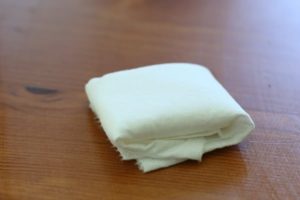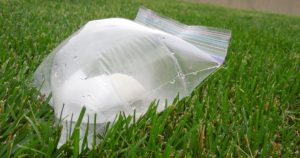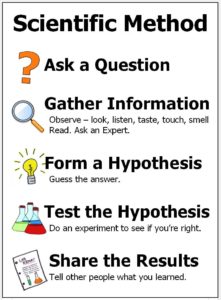This is a fun science experiment to try outside now that the weather is nice. Warning: it is loud and messy! Don’t feel like going outside? You can always try it in the bathtub or in the shower. It is part of our science summer camp at CEFA Early Learning schools and one of the children’s favourite. They learn about chemical reactions, as well as pressure and gas.
Best Ages for This Activity
Two to five
How to Make It
Ingredients
- A sealable sandwich bag
- A square of paper towel
- 1½ tablespoons of baking soda
- ½ cup of white vinegar
- ¼ cup of warm water
- A measuring cup
- A measuring spoon
Let’s Get Started!
- Invite your child to try a science experiment
- Explain that for the science experiment, you will need a Ziploc bag that does not leak once it is sealed. For that, you may have to test a few sealable sandwich bags to make sure they are completely leak-proof (this is important for the experiment). Your child can test the bags by pouring water into the bag until it is about half full, sealing it, turning it upside down and shaking it to make sure it does not leak. One you have your bag, empty the water from it and set it aside while you find the other ingredients.
- Find a square of paper towel of about 12cm. Once you have it, lay it flat and place the baking soda in the centre of it. Encourage your child to use a measuring spoon to ensure it is the right amount of baking soda. This will also teach your child math, especially fractions, so don’t skip this step.
- Once the baking soda is on the paper towel, invite your child to fold the paper towel so it makes a tiny “package” and contains the baking soda in it. This will be your time-released explosive, so cover it well with the paper towel:

- Invite your child to use a measuring cup to measure the vinegar, then pour it inside the Ziploc bag (you can hold the bag so it is easier).
- With the same measuring cup, your child can measure the warm water, then pour it inside the same Ziploc bag while you keep holding it. If you wish, you can add a few drops of food colouring (then make sure you do the experiment outside so you don’t stain clothes or furniture).
- Take your paper towel and Ziploc bag outside on a grassy area, or where you decided to try the experiment (keep in mind it will explode, so it can get messy), Once you found the perfect spot, move on to the last step:
- This step will need to be executed swiftly by your child, and may require your help, depending on your child’s age: your child will need to drop the paper towel packet containing the baking soda inside the bag, and seal it hermetically. This is where you may need to help to ensure that the bag is completely sealed (otherwise, the experiment will not work). Once the bag is sealed, your child can shale it a little, put it on the ground and take a few steps bag.
- All you need to do now is observe. You will see the paper towel start to dissolve inside the bag, and the bag start to inflate until it explodes with a loud bang!

- You can try the experiment again using a new bag and the same steps and ingredients. This time, try using the scientific method:

- Questions you can ask:
- How long does it take for the bag to blow up from the time you put it down on the ground? (measure the time using a timer)
- Would the bag explode faster or slower if we do not shake it before we put it down? How much faster/slower?
- Would it explode faster or slower if we add more vinegar?
- Would it explode faster or slower if we add more warm water?
- Would it explode faster or slower if we add more baking soda?
- Would it explode faster or slower if we use a bigger bag?
- Would it explode faster or slower if we use toilet paper instead of paper towel?
- What happens if we do not seal the bag?
- How far did the explosion go? (this is easy to measure if you add food colouring to your bag and then use a measuring tape to measure how far the liquid went on the pavement)
- Why did the bag explode?
- Why did it not explode right away?
- Once you have posed, answered and tested all of your questions, you can explain what actually happened inside that bag to your child.
Here is what happens in this experiment: Once the paper towel gets soaked with the liquid mixture, the baking soda (a base) starts to react with the vinegar (an acid). This sets a chemical reaction called an acid-base reaction. The acid-base reaction makes carbon dioxide gas, which needs more space than the sandwich bag can accommodate. The gas keeps filling the bag until there is no more room, at which point… POP! It explodes – loudly and visibly.
Learning Opportunities
This is a thrilling S.T.E.M. activity where your child can see a chemical reaction as it happens. For better science learning, follow the steps of your scientific method with your child. Make sure you use as much math vocabulary as you can (for example, measure time, measure distance, use words like faster/slower, etc.) and use as many opportunities as you can to measure, count and compare.
CEFA tip: Remember to let your child do as much of the process as they are capable of.
Books Your Child Might Like
Toys Your Child Might Like
For 3+
For 5+
As an Amazon Associate I earn from qualifying purchases